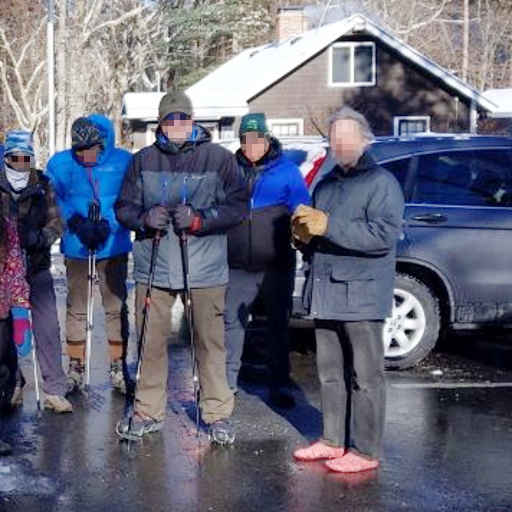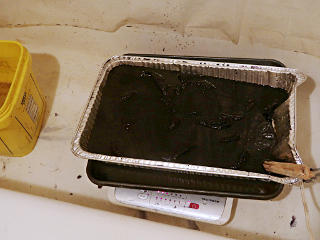
Standing in the still-liquid skin of moisture from the salt solution on the parking lot was rather cold, leading to a bit of visible "toe float", but as soon as we headed off into the woods I was completely fine.
| A long time ago, my mom was a fairly prolific knitter, and knitted several pairs of very thick, tough socks out of nylon yarn for our family. We figured these would be just about indestructable due to the strength of the fiber. I wound up with a few pairs of these, and later in life decided to turn them into the only winter footwear I really ever need anymore -- to insulate against subfreezing temperatures when appropriate. Basically, mittens for my feet. The nylon behaves sort of like wool -- it can get permeated with water, but still insulates fairly well. These have been tested in pretty cold weather on rough surfaces, and proven to be enough of an extra thermal layer to keep my feet out of dangerous chill and still stay fairly resistant to abrasion and wear. And yet they still offer almost the same flexibility and sensing of the terrain underfoot as being barefoot, and the tracks I leave in snow even look pretty much like barefoot tracks because of the same weight distribution. And the grip on ice is surprisingly good. |

|
The problem was, though, that they were made in somwhat ridiculous
colors for wearing by themselves in public settings.
Here's part of my local hike group gathering for our weekly outing on a
sub-freezing morning; one pair of feet is distinctly noticeable as odd.
[Some others have boots with microspikes added; I have no need of such
things.]
Standing in the still-liquid skin of moisture from the salt solution on the parking lot was rather cold, leading to a bit of visible "toe float", but as soon as we headed off into the woods I was completely fine. |

|
The key to working with nylon is acidity and heat. Jacquard's website has a lot of good info about this, without getting too far into the weeds with the chemical science. Underneath everything was my induction cooker, and since an aluminum tray wouldn't work with that, I used a steel tray with a water bath as a sort of "double-boiler" setup. This kept the mix adequately hot, a little less than boiling, as I added the dye and material and a bit of vinegar as recommended. |
| I kept slowly stirring the "soup" around for about the recommended half-hour, to make sure the stuff had plenty of time to bond. Every so often I'd pull the end of a sock out and squeeze the liquid out, to see how well the "darkening" was going. I could already see it wasn't going to be perfect, but likely good enough for the purpose. |